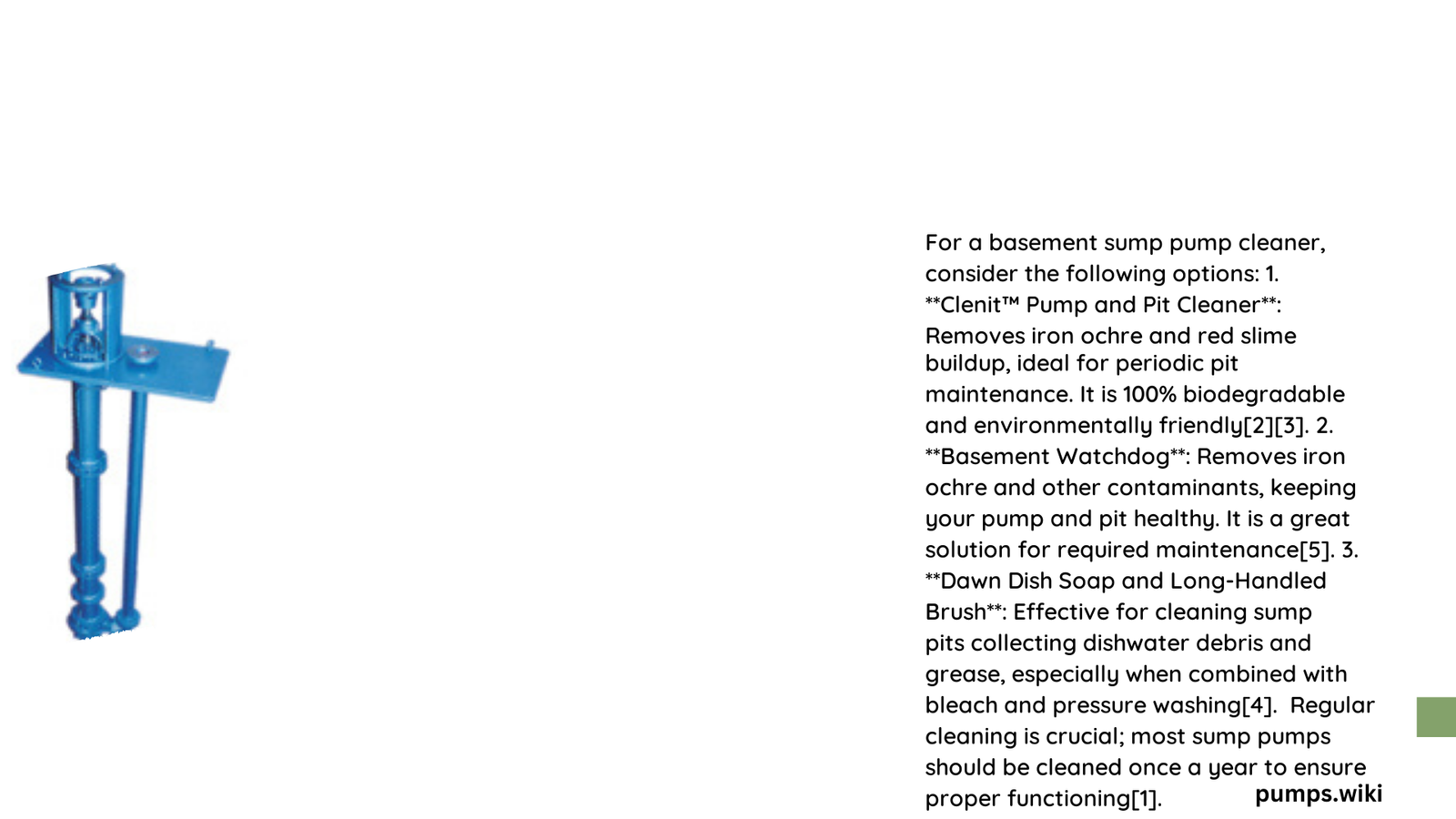A basement sump pump cleaner is crucial for maintaining the efficiency and longevity of your sump pump system. Regular cleaning prevents clogs, reduces the risk of pump failure, and ensures optimal performance during heavy rainfall or flooding. This guide provides comprehensive information on cleaning solutions, maintenance routines, and best practices for keeping your basement sump pump in top condition.
What is the Best Cleaning Solution for a Basement Sump Pump?
The most effective and recommended cleaner for a basement sump pump is a 50/50 mix of water and vinegar. This solution offers several advantages:
- Non-toxic and eco-friendly
- Safe for pump components
- Highly effective in removing debris and mineral buildup
- Readily available and cost-effective
While some homeowners consider using bleach, it’s important to note that it should be used cautiously and in limited quantities, especially for older cast iron components.
How Often Should You Clean Your Basement Sump Pump?

The frequency of cleaning your basement sump pump depends on various factors:
- Annual Cleaning: At minimum, clean your sump pump once a year
- Quarterly Cleaning: For homes in areas with severe weather or high water tables
- Monthly Check: Inspect for blockages and proper operation
- Seasonal Maintenance: Clean before heavy rain seasons
Regular maintenance not only ensures efficient operation but also extends the lifespan of your sump pump, which typically lasts around ten years with proper care.
What Are the Steps to Clean a Basement Sump Pump?
Follow these steps for a thorough cleaning of your basement sump pump:
- Disconnect the power supply
- Remove the pump from the sump pit
- Rinse the pump with a garden hose
- Scrub off debris with a brush
- Apply the vinegar and water solution
- Rinse thoroughly
- Clean the sump pit
- Reinstall the pump and test
What Tools and Materials Are Needed for Cleaning?
To effectively clean your basement sump pump, gather the following:
- Garden hose
- Scrub brush
- Bucket
- Wet/dry vacuum
- Vinegar
- Water
- Protective gloves
- Plastic wrap
How Can You Prevent Sump Pump Clogs?
Preventing clogs is essential for maintaining your basement sump pump. Here are some tips:
- Install a pump screen or filter
- Regularly remove debris from the sump pit
- Ensure proper pit gravel
- Check and clean the discharge pipe
- Consider a backup pump system
What Are the Signs of a Dirty Sump Pump?
Recognizing the signs of a dirty sump pump can help you address issues before they become serious problems:
- Unusual noises during operation
- Frequent cycling on and off
- Visible debris in the sump pit
- Reduced pumping efficiency
- Foul odors from the pit
How Does Regular Cleaning Impact Sump Pump Efficiency?
Regular cleaning of your basement sump pump offers several benefits:
| Benefit | Description |
|---|---|
| Improved Performance | Removes debris that can hinder pump operation |
| Extended Lifespan | Reduces wear and tear on pump components |
| Energy Efficiency | A clean pump requires less energy to operate |
| Reduced Risk of Failure | Prevents clogs that can lead to pump burnout |
| Better Water Quality | Minimizes the growth of bacteria and mold |
What Are Common Mistakes to Avoid When Cleaning a Sump Pump?
When cleaning your basement sump pump, avoid these common mistakes:
- Using harsh chemicals that can damage pump components
- Forgetting to disconnect the power before cleaning
- Neglecting to clean the check valve and discharge pipe
- Failing to test the pump after cleaning
- Ignoring manufacturer’s specific cleaning instructions
How Can You Maintain Your Sump Pump Between Cleanings?
To keep your sump pump in good condition between major cleanings:
- Conduct monthly visual inspections
- Test the pump by pouring water into the pit
- Keep the area around the pump clear of debris
- Check and clean the discharge pipe outlet
- Listen for any unusual noises during operation
By following these guidelines and regularly cleaning your basement sump pump, you can ensure its optimal performance and protect your home from potential water damage.
